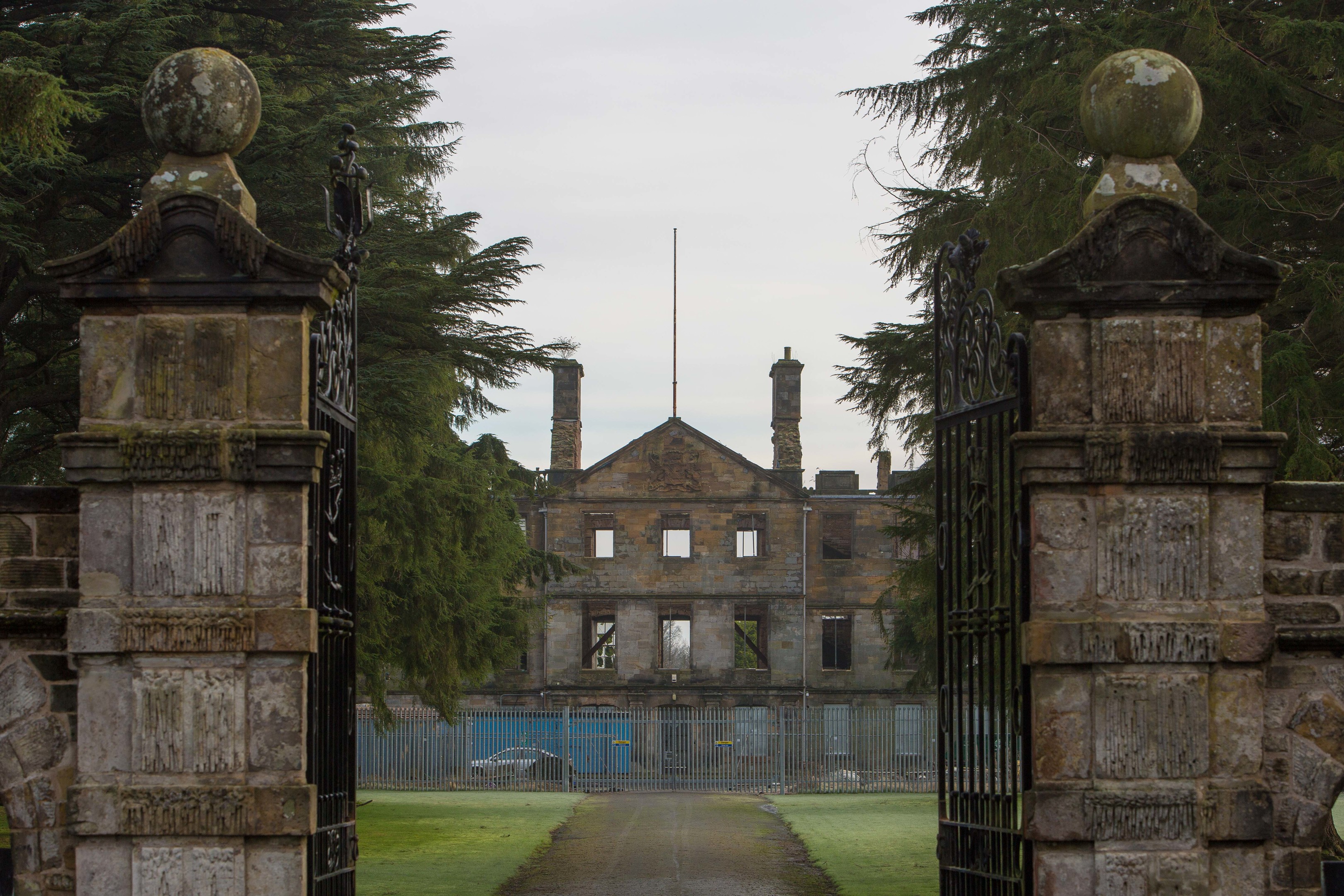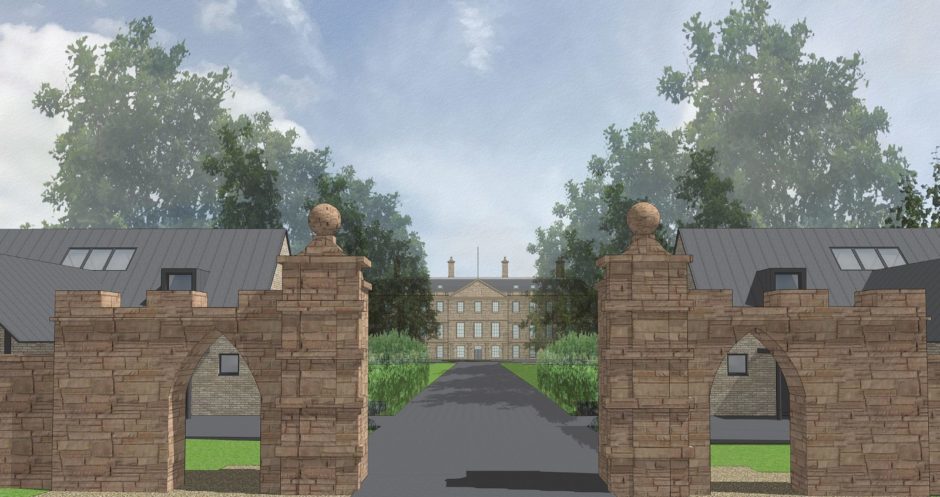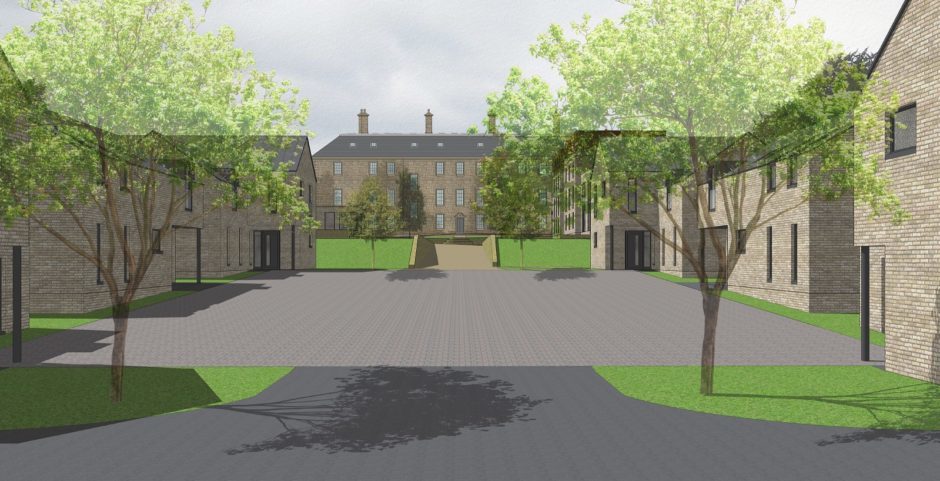A long-awaited new plan to transform a historic Fife mansion into luxury flats has finally been unveiled.
Hopes have been raised that the blueprints put forward by restoration experts Byzantian Developments for Leslie House will bring an end to years of uncertainty over the land, which was known for decades as the seat of the Rothes family.
The 17th century mansion house has been the subject of speculation for many years, particularly since 2009 when previous plans to revamp the structure literally went up in smoke when fire ravaged the building.
However, Byzantian’s plans have now been formally tabled and locals hope the once grand building will soon be restored to its former glory after being left to rack and ruin in more recent years.
The proposed re-development will “sensitively” convert the existing Leslie House to form 19 luxury apartments, with a pavilion extension joined to the existing building through a glazed link comprising eight luxury apartments and one independently accessed duplex dwelling.
This will be in tandem with a new build development of six detached houses arranged in a courtyard design to the east of the site, and two gatehouse style properties to the west of the site.
A spokesperson for Felsham Planning and Development, which is acting as planning advisers to Byzantian Developments, said the plans will be taken on by a developer with a “clear track record” and urged planners to grant planning permission and listed building consent at the earliest opportunity.
“In summary, the site is suitable, available and viable; demonstrably effective; can make an obvious contribution to land supply requirements in the next five years; and importantly has market interest,” the spokesperson added.
Byzantian Developments purchased Leslie House and associated grounds from Edinburgh-based Sundial Properies, which had been pursuing plans to restore and convert the mansion into flats up until a fire destroyed large areas of the site.
The fire left the building as the shell which can be seen today and which has been targeted by vandals in more recent years.
The latest proposals have already been welcomed by the Friends of Leslie House group, which has been campaigning to save the site for future generations.
Its members have already held discussions with Byzantian, and Mary Patrick, from the Friends group, said the designs appeared to be “very sympathetic”.
“It is now up to the public to comment and we’ll see where that takes us,” she said.
“My main aim in life was to save that house from future degradation and from being demolished. This proposal will do that and can only be a good thing.”
A new beginning for a historic site?
Leslie House was built for the Duke of Rothes between 1667 and 1674 and became the seat of the Rothes family.
The house, which was dubbed Villa De Rothes, was the centre of life in the village and once rivalled Holyrood Palace in terms of size and glamour.
When a fire destroyed the building in 1763, the north, east and south wings were demolished.
Only the west wing was retained and this was reconstructed between 1745 and 1747.
From 1904 to 1919, Leslie House was the home of Noelle, Countess of Rothes, a noted philanthropist who became famous as a heroine of the Titanic disaster in 1912, and during World War One Lady Rothes converted a wing of the house into a hospital for wounded soldiers invalided from the Front.
In 1919, the house was acquired by Sir Robert Nairn, who gave it to the Church of Scotland in 1952 for use as an eventide home, and it remained in use until 2005.
Sundial Properties then obtained the property and proposed the restoration and conversion of the listed building, but a devastating fire in 2009 put a stop to that plan.













